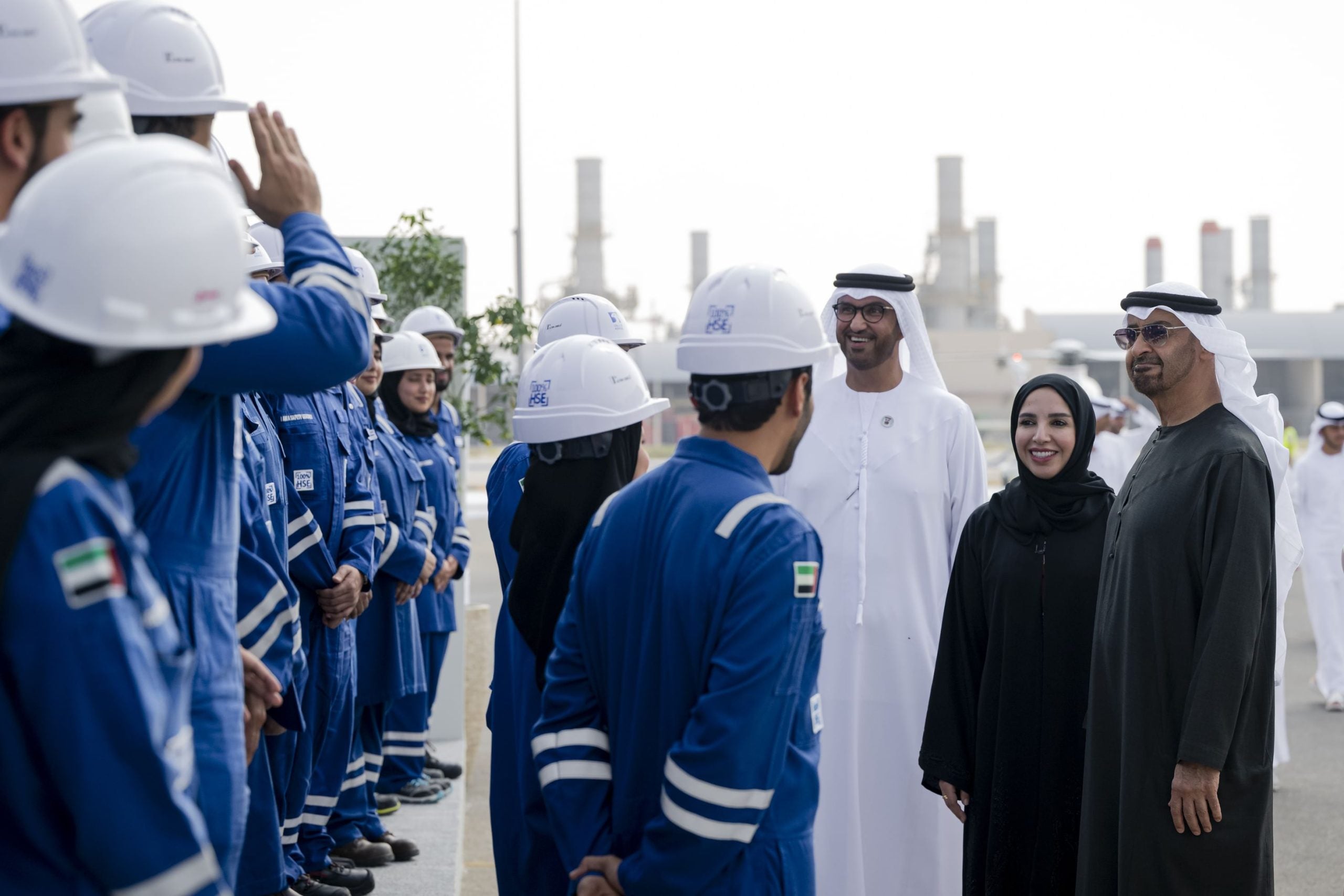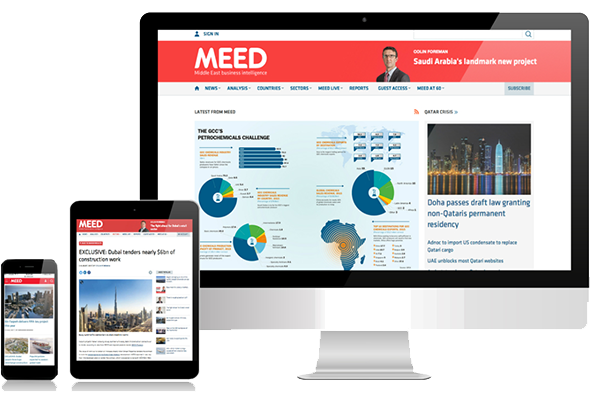Liquidity constraints force corporate banking shift
5 February 2025
Corporate lenders face a liquidity crunch as businesses struggle to maintain cash flow amid rising costs and tighter credit conditions. Credit constraints have worsened, with 5% of middle-market borrowers now heavily leveraged and unable to refinance, according to credit rating firm KBRA. At the same time, rising fraud and outdated payment infrastructures are compounding the liquidity challenge.
Payment fraud losses are expected to reach $26.4bn by 2028, according to GlobalData, making cash flow forecasting even more unpredictable. Increasing cyber threats, unauthorised fund transfers and fraudulent transactions directly impact liquidity buffers, forcing businesses to enhance treasury functions.
Slow settlement cycles and outdated infrastructure continue to choke liquidity, restricting businesses’ ability to manage cash flow. To stay competitive, lenders must rethink their support for corporate clients by ensuring faster access to funds, smarter risk controls and seamless financial integration.
The pressure to deliver faster, more secure and smarter financial solutions is increasing. Innovations such as real-time payments (RTPs), artificial intelligence (AI)-driven risk models and embedded finance address these needs by enhancing liquidity management, improving credit allocation and streamlining cross-border transactions. Lenders that fail to adapt risk losing corporate clients to more agile competitors.
ENTRIES CLOSING SOON: MENA Banking Excellence Awards 2025: Corporate & Investment
AI reshapes liquidity strategy
AI is transforming liquidity management, shifting from a compliance and fraud detection tool to a key driver of treasury optimisation. Lenders are using AI-powered forecasting to improve treasury operations, helping businesses anticipate cash flow needs, automate funding decisions and optimise capital allocation.
HSBC’s AI-driven treasury solutions have improved forecasting accuracy by 92%, reducing liquidity risk for businesses operating across multiple markets. JP Morgan has also adopted AI-driven liquidity forecasting, enabling clients to optimise cash reserves and enhance working capital efficiency.
AI optimises liquidity management while strengthening security, helping lenders counter fraud and financial crime in an increasingly digital landscape. Lenders are leveraging AI’s predictive power to detect anomalies and security threats before they escalate.
Fraud detection remains a key priority as financial crime becomes more sophisticated. Many lenders are deploying AI to enhance fraud detection and risk mitigation. For instance, Mastercard and Stripe use AI-driven risk models, analysing over 1,000 transaction data points per second to detect fraud in real time.
Integrating AI into treasury services not only enhances operational efficiency but also positions lenders as strategic partners, offering data-driven insights that strengthen corporate client relationships.
Real-time payments drive liquidity optimisation
RTPs are now central to working capital strategies, not just a speed upgrade. Corporate clients increasingly expect instant settlements and real-time liquidity visibility as standard banking features.
The global RTP market is projected to surpass $700tn by 2028, according to GlobalData, as demand grows for seamless cross-border transactions, reduced credit dependency and faster cash conversion cycles. This shift is critical for treasury and finance teams, which require greater control over cash positions to navigate fluctuating market conditions.
Payment infrastructure providers such as Swift GPI and Visa B2B Connect have already streamlined high-value international transactions, reducing settlement times from days to minutes. These advancements are reshaping corporate banking priorities, with lenders expected to embed real-time payment capabilities within their broader treasury services.
ENTRIES CLOSING SOON: MENA Banking Excellence Awards 2025: Corporate & Investment
Embed finance or lose relevance
Corporate banking is shifting away from traditional, bank-led services as embedded finance transforms how businesses access payments, liquidity and credit directly within their operational platforms. By integrating financial products within enterprise platforms and enterprise resource planning (ERP) software, companies reduce dependence on external bank portals.
GlobalData forecasts that corporate embedded finance will exceed $7tn by 2030, driven by demand for frictionless cash flow management, instant access to financing and automated treasury functions. Businesses are embedding banking services within their digital ecosystems, integrating payments, lending and cash management into their core platforms.
Major banks are already adapting. Goldman Sachs and Citi have developed embedded lending and treasury tools that integrate directly into ERP systems, enabling businesses to initiate payments, access credit and manage liquidity without switching platforms.
Banks that fail to embed financial solutions risk losing visibility over corporate transactions. Institutions that successfully integrate embedded finance into their offerings will strengthen corporate relationships and secure long-term revenue streams. Conversely, delaying digital integration may result in businesses managing financial operations independently within their own platforms, reducing banks’ role in liquidity management.
How lenders must adapt to the liquidity shift
The future of corporate banking is being shaped by AI-driven treasury solutions, real-time payments and embedded finance—all of which are rapidly transitioning from competitive advantages to industry standards.
For banking leaders, this shift demands immediate action.
Corporate clients are no longer just looking for lenders – they need strategic partners who can provide seamless liquidity management, intelligent forecasting and embedded financial solutions.
Banks that embrace these innovations will strengthen corporate relationships, drive new revenue models and maintain relevance in a shifting financial landscape. Those that hesitate risk being replaced by more agile, tech-driven competitors offering faster, smarter and more integrated financial services.
Exclusive from Meed
-
 Visa agrees to support digital payments in Syria
Visa agrees to support digital payments in Syria5 December 2025
-
 Meraas announces next phase of Nad Al-Sheba Gardens
Meraas announces next phase of Nad Al-Sheba Gardens5 December 2025
-
 Frontrunner emerges for Riyadh-Qassim IWTP
Frontrunner emerges for Riyadh-Qassim IWTP5 December 2025
-
 Adnoc creates new company to operate Ghasha concession
Adnoc creates new company to operate Ghasha concession5 December 2025
-
 Dubai RTA announces Al-Wasl road development project
Dubai RTA announces Al-Wasl road development project5 December 2025
All of this is only 1% of what MEED.com has to offer
Subscribe now and unlock all the 153,671 articles on MEED.com
- All the latest news, data, and market intelligence across MENA at your fingerprints
- First-hand updates and inside information on projects, clients and competitors that matter to you
- 20 years' archive of information, data, and news for you to access at your convenience
- Strategize to succeed and minimise risks with timely analysis of current and future market trends

Related Articles
-
 Visa agrees to support digital payments in Syria
Visa agrees to support digital payments in Syria5 December 2025
Visa and the Central Bank of Syria have agreed on a strategic roadmap that will allow the US-based card and digital payments company to begin operations in Syria and support the development of a modern digital payments system.
Under the agreement, Visa will work with licensed Syrian financial institutions under a phased plan to establish a secure foundation for digital payments.
The early stages will involve Visa supporting the central bank in issuing Europay, Mastercard and Visa (EMV)-compliant payment cards and enabling tokenised digital wallets – bringing the country in line with internationally interoperable standards.
Visa will also provide access to its platforms, including near-field communication (NFC) and QR-based payments, invest in local capacity building and support local entrepreneurs seeking to develop solutions leveraging Visa’s global platform.
“A reliable and transparent payment system is the bedrock of economic recovery and a catalyst that builds the confidence required for broader investment to flow into the country,” noted Visa’s senior VP for the Levant, Leila Serhan. “This partnership is about choosing a path where Syria can leapfrog decades of legacy infrastructure development and immediately adopt the secure, open platforms that power modern commerce.”
The move marks one of the most significant steps yet in Syria’s slow and uneven return to the formal global financial system and carries implications that reach beyond just payments technology.
It lays the groundwork for overturning more than a decade of financial isolation in which Syria has operated largely outside global banking and settlement networks.
Visa’s entry will not erase all existing barriers – as many restrictions remain in force and will continue to shape what is practically possible – but its support signals a reopening of channels that could smooth Syria’s reintegration into financial networks.
The involvement of the US-based payments provider is also a further tacit sign of the US government’s enthusiastic bear hug of the new post-Assad Syrian government under President Ahmed Al-Sharaa.
For investors assessing long-term opportunities, the presence of a globally recognised payments operator will provide reassurance that Syria’s financial system is returning to international norms, and the security and transparency that comes with it.
https://image.digitalinsightresearch.in/uploads/NewsArticle/15207198/main.gif -
 Meraas announces next phase of Nad Al-Sheba Gardens
Meraas announces next phase of Nad Al-Sheba Gardens5 December 2025
Dubai-based real estate developer Meraas Holding, which is part of Dubai Holding, has announced the eleventh and final phase of its Nad Al-Sheba Gardens residential community in Dubai.
It includes the development of 210 new villas and townhouses and a school, which will be located at the northwest corner of the development.
The latest announcement follows Meraas awarding a AED690m ($188m) contract for the construction of the fourth phase of the Nad Al-Sheba Gardens community in May, as MEED reported.
The contract was awarded to local firm Bhatia General Contracting.
The scope of the contract covers the construction of 92 townhouses, 96 villas and two pool houses.
The contract award came after Dubai-based investment company Shamal Holding awarded an estimated AED80m ($21m) contract to UK-based McLaren Construction last year for the Nad Al-Sheba Gardens mall.
The project covers the construction and interior fit-out of a two-storey mall, covering an area of approximately 12,600 square metres.
The UAE’s heightened real estate activity is in line with UK analytics firm GlobalData’s forecast that the construction industry in the country will register annual growth of 3.9% in 2025-27, supported by investments in infrastructure, renewable energy, oil and gas, housing, industrial and tourism projects.
The residential construction sector is expected to record an annual average growth rate of 2.7% in 2025-28, supported by private investments in the residential housing sector, along with government initiatives to meet rising housing demand.
https://image.digitalinsightresearch.in/uploads/NewsArticle/15206904/main.jpg -
 Frontrunner emerges for Riyadh-Qassim IWTP
Frontrunner emerges for Riyadh-Qassim IWTP5 December 2025

Saudi Arabia’s Vision Invest has emerged as frontrunner for the contract to develop the Riyadh-Qassim independent water transmission pipeline (IWTP) project, according to sources.
State water offtaker Saudi Water Partnership Company (SWPC) is preparing to award the contract for the IWTP "in the coming weeks", the sources told MEED.
The project, valued at about $2bn, will have a transmission capacity of 685,000 cubic metres a day. It will include a pipeline length of 859 kilometres (km) and a total storage capacity of 1.59 million cubic metres.
In September, MEED reported that bids had been submitted by two consortiums and one individual company.
The first consortium comprises Saudi firms Al-Jomaih Energy & Water, Al-Khorayef Water & Power Technologies, AlBawani Capital and Buhur for Investment Company.
The second consortium comprises Bahrain/Saudi Arabia-based Lamar Holding, the UAE's Etihad Water & Electricity (Ewec) and China’s Shaanxi Construction Installation Group.
The third bid was submitted by Saudi Arabia's Vision Invest.
It is understood that financial and technical bids have now been opened and Vision Invest is likely to be awarded the deal.
The Riyadh-based investment and development company made a "very aggressive" offer, one source told MEED.
In November, the firm announced it had sold a 10% stake in Saudi Arabia-based Miahona as part of a strategy to reallocate capital "towards new and diversified investments".
The company did not disclose which projects the capital might be reallocated towards.
As MEED recently reported, Vision Invest is also bidding for two major packages under Dubai's $22bn tunnels programme in a consortium with France's Suez Water Company.
The Riyadh-Qassim transmission project is the third IWTP contract to be tendered by SWPC since 2022.
The first two are the 150km Rayis-Rabigh IWTP, which is under construction, and the 603km Jubail-Buraydah IWTP, the contract for which was awarded to a team of Riyadh-based companies comprising Al-Jomaih Energy & Water, Nesma Group and Buhur for Investment Company.
Like the first two IWTPs, the Riyadh-Qassim IWTP project will be developed using a 35-year build-own-operate-transfer contracting model.
Commercial operations are expected to commence in the first quarter of 2030.
https://image.digitalinsightresearch.in/uploads/NewsArticle/15206609/main.jpg -
 Adnoc creates new company to operate Ghasha concession
Adnoc creates new company to operate Ghasha concession5 December 2025
Register for MEED’s 14-day trial access
The board of directors of Abu Dhabi National Oil Company (Adnoc Group) has approved the establishment of a new company to operate the Ghasha offshore sour gas concession in Abu Dhabi waters.
The decision to create the new entity, to be called Adnoc Ghasha, was taken during a recent meeting of Adnoc Group’s board in Abu Dhabi, which was chaired by Sheikh Mohamed Bin Zayed Al-Nahyan, UAE President and Ruler of Abu Dhabi.
Adnoc Group owns and operates the Ghasha concession, holding the majority 55% stake. The other stakeholders in the asset are Italian energy major Eni with a 25% stake, Thailand’s PTTEP Holding, which holds a 10% interest, and Russia’s Lukoil, owning the remaining 10% stake.
The Ghasha concession consists of the Hail and Ghasha fields, along with the Hair Dalma, Satah al-Razboot (Sarb), Bu Haseer, Nasr, Shuwaihat and Mubarraz fields.
Adnoc expects total gas production from the concession to ramp up to more than 1.8 billion cubic feet a day (cf/d) before the end of the decade, along with 150,000 barrels a day of oil and condensates. This target will mainly be achieved through the Hail and Ghasha sour gas development project.
In October 2023, Adnoc and its partners awarded $16.94bn of engineering, procurement and construction (EPC) contracts for its Hail and Ghasha project – the biggest capital expenditure made by the Abu Dhabi energy company on a single project in its history.
Adnoc awarded the onshore EPC package to Italian contractor Tecnimont, while the offshore EPC package was awarded to a consortium of Abu Dhabi’s NMDC Energy and Italian contractor Saipem.
The $8.2bn contract relates to EPC work on offshore facilities, including facilities on artificial islands and subsea pipelines.
The Hail and Ghasha development will also feature a plant that will capture and purify carbon dioxide (CO2) emissions for sequestration (CCS), in line with Adnoc’s committed investment for a carbon capture capacity of almost 4 million tonnes a year (t/y). The CO2 recovery plant will have a total capacity to capture and store 1.5 million t/y of emissions from the Hail and Ghasha scheme.
Prior to reaching the final investment decision on the Hail and Ghasha project in 2023, the Ghasha concession partners, led by Adnoc, awarded two EPC contracts worth $1.46bn in November 2021 to execute offshore and onshore EPC works on the Dalma gas development project. The project will enable the Dalma field to produce about 340 million cf/d of natural gas.
https://image.digitalinsightresearch.in/uploads/NewsArticle/15206382/main2754.jpg -
 Dubai RTA announces Al-Wasl road development project
Dubai RTA announces Al-Wasl road development project5 December 2025
Register for MEED’s 14-day trial access
Dubai’s Roads & Transport Authority (RTA) has announced the Al-Wasl Road upgrade project, spanning 15 kilometres (km) from the intersection with Umm Suqeim Street to the junction with 2nd December Street.
The scheme includes upgrading six intersections – Al-Thanya, Al-Manara, Umm Al-Sheif, Umm Amara, Al-Orouba and Al-Safa streets – along with upgrading Al-Thanya Street and constructing five tunnels totalling 3.8km.
A new tunnel will be built at the intersection with Al-Manara Street. It will consist of three lanes and split into two routes: two lanes from Sheikh Zayed Road to Jumeirah Street and two lanes from Sheikh Zayed Road to Umm Suqeim Street, with a total capacity of 4,500 vehicles per hour.
The project also includes a 750m-long tunnel on Umm Al-Sheif Street, comprising two lanes from Sheikh Zayed Road to Jumeirah Street, accommodating up to 3,200 vehicles per hour.
A tunnel will be constructed at the intersection of Al-Wasl Road with Umm Amara Street, featuring two lanes in each direction, with a total length of 700m and a combined capacity of 6,400 vehicles per hour.
The road will also be widened from two to three lanes in each direction.
The project is expected to reduce travel times along Al-Wasl Road by 50% and increase capacity from 8,000 to 12,000 vehicles per hour in both directions.
Planning for growth
In March 2021, the government launched the Dubai 2040 Urban Master Plan. Its launch referenced studies indicating that the emirate’s population will reach 5.8 million by 2040, up from 3.3 million in 2020. The daytime population is set to increase from 4.5 million in 2020 to 7.8 million in 2040.
In December 2022, Sheikh Mohammed Bin Rashid Al-Maktoum, Vice President and Prime Minister of the UAE and Ruler of Dubai, approved the 20-Minute City Policy as part of the second phase of the Dubai 2040 Urban Master Plan.
In addition to the road projects, the RTA’s Dubai Metro Blue Line extension forms part of Dubai’s plans to improve residents’ quality of life by cutting journey times, as outlined in the policy.
The policy aims to ensure that residents can meet 80% of their daily requirements within a 20-minute journey time, on foot or by bicycle. This goal will be achieved by developing integrated service centres with all necessary facilities and by increasing population density around mass transit stations.
https://image.digitalinsightresearch.in/uploads/NewsArticle/15205950/main.jpg



